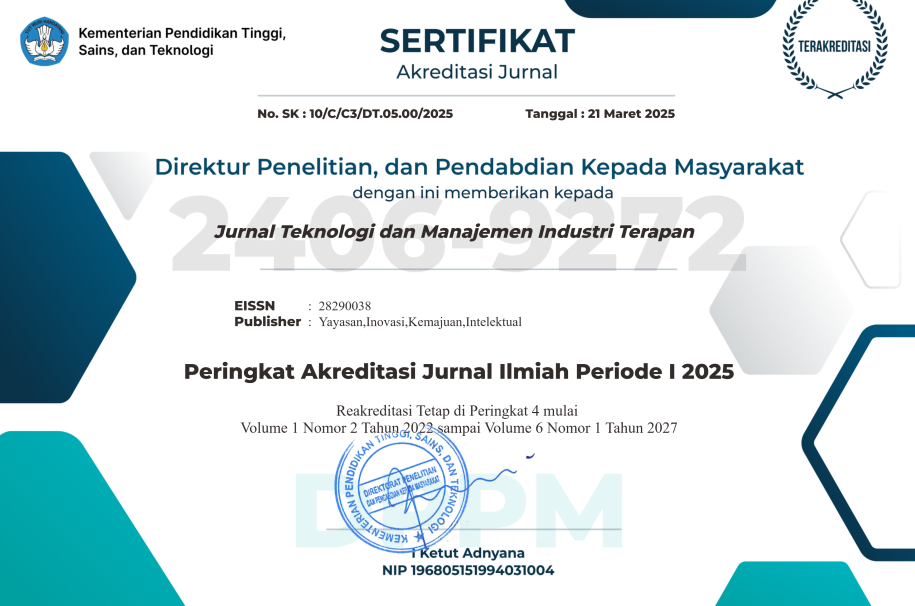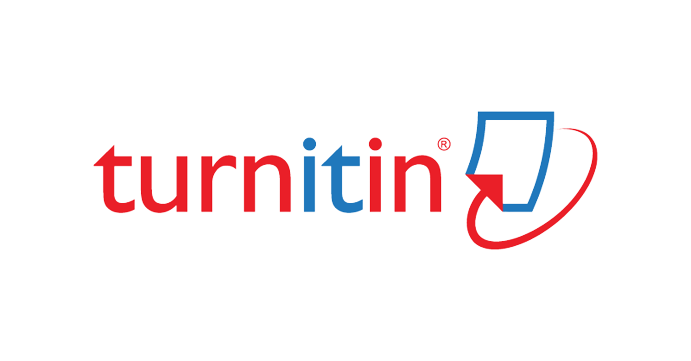Analisis Tindak Tutur (Speech Act) iklan Shopee_id di Instagram
DOI:
https://doi.org/10.55826/jtmit.v4iI.892Keywords:
Iklan, Tindak Tutur, InstagramAbstract
Shopee merupakan salah satu perusahaan E-commerce yang terkemuka di Indonesia yang juga melakukan promosi lewat media sosial Instagram. Sebagai salah satu platform media sosial yang paling banyak digunakan di Indonesia, Instagram menjadi salah satu opsi media pengiklanan. Lewat akun Instagram shopee_id, Shopee mempromosikan produk-produk mereka. Tulisan ini bertujuan untuk menganalisis konstruksi bahasa yang digunakan dalam postingan akun shopee_id dengan menggunakan pendekatan pragmatik khususnya tindak tutur. Metode yang digunakan adalah kualitatif deskriptif melalui analisis caption/keterangan dalam setiap postingan. Terdapat sepuluh postingan yang dianalisis dalam tulisan ini. Hasil analisis menunjukkan bahwa akun shopee_id memiliki pola yang repetitif dalam melakukan pengiklanan. Dalam setiap keterangan (caption) yang dicantumkan dalam postingan di akun Instagram, tindak tutur ilokusi yang digunakan bersifat direktif atau ajakan. Ilokusi ini disampaikan melalui kalimat ajakan baik secara langsung maupun tidak langsung. Di sisi lain, perlokusi sebagai konsekuensi yang diharapkan atas komunikan (pengikut akun shopee_id) adalah membeli produk-produk yang ditawarkan. Penggunaan ragam bahasa slang/gaul dan istilah asing dalam setiap postingan merupakan bentuk kesamaan pengetahuan (background knowledge) antara komunikator dan komunikan.
References
F.Wang, “Designing marketing content for social commerce to drive consumer purchase behaviors: A perspective from speech act theory,” J. Retail. Consum. Serv., vol. 70, 2023, doi: 10.1016/j.jretconser.2022.103156.
D.Chidiac, “When media matters: the role of media richness and naturalness on purchase intentions within influencer marketing,” J. Strateg. Mark., vol. 31, no. 6, pp. 1178–1198, 2023, doi: 10.1080/0965254X.2022.2062037.
A.Razzaq, “Towards an understanding of meme marketing: conceptualisation and empirical evidence,” J. Mark. Manag., vol. 39, no. 7, pp. 670–701, 2023, doi: 10.1080/0267257X.2022.2158906.
M.Huang, “Subjective or objective: How the text style in computational advertising influences consumer behaviors?,” Fundam. Res., vol. 2, no. 1, pp. 144–153, 2022, doi: 10.1016/j.fmre.2021.11.004.
E. M. G.Younis, “Machine learning for human emotion recognition: a comprehensive review,” Neural Computing and Applications, vol. 36, no. 16. pp. 8901–8947, 2024. doi: 10.1007/s00521-024-09426-2.
G.Chen, “How YouTubers Make Popular Marketing Videos? Speech Acts, Move Structure, and Audience Response in YouTube Influencer Marketing Videos,” Sage Open, vol. 13, no. 1, 2023, doi: 10.1177/21582440231152227.
X.Ma, “The influence of live video hosts’ speech act on purchase behaviour,” J. Retail. Consum. Serv., vol. 81, 2024, doi: 10.1016/j.jretconser.2024.103984.
J.Fletcher-Brown, “The Role of Consumer Speech Acts in Brand Activism: A Transformative Advertising Perspective,” J. Advert., vol. 53, no. 4, pp. 491–510, 2024, doi: 10.1080/00913367.2023.2288828.
J.Smith, “Feeding Indigenous Aotearoa better,” J. R. Soc. New Zeal., 2024, doi: 10.1080/03036758.2024.2327420.
J. L.Pomeranz, “Food Marketing to - And Research on - Children: New Directions for Regulation in the United States,” J. Law Med. Ethics, vol. 50, no. 3, pp. 542–550, 2022, doi: 10.1017/jme.2022.92.
M.Lind, “Speaking, but having no voice. Negotiating agency in advertisements for intelligent personal assistants,” Convergence, vol. 30, no. 3, pp. 1008–1024, 2024, doi: 10.1177/13548565231192100.
L. M.Rababah, “Examining Speech Acts in Jordanian Advertising: Pragmatic Functions, Linguistic Features, and Rhetorical Devices,” J. Ethn. Cult. Stud., vol. 10, no. 5, pp. 212–223, 2023, doi: 10.29333/ejecs/1722.
A.Das, “Developing a chatbot/intelligent system for neurological diagnosis and management,” Augmenting Neurological Disorder Prediction and Rehabilitation Using Artificial Intelligence. pp. 273–291, 2022. doi: 10.1016/B978-0-323-90037-9.00010-2.
A.Gupta, “Detection of Spam and Fraudulent calls Using Natural Language Processing Model,” Proceedings 2024 6th International Conference on Computational Intelligence and Communication Technologies Ccict 2024. pp. 423–427, 2024. doi: 10.1109/CCICT62777.2024.00075.
C.Pando, “Health Insurance Ad Messages Targeted to English- and Spanish-Speaking Populations in a Period of Limited Federal Investment in Marketplace Outreach,” Med. Care Res. Rev., vol. 79, no. 6, pp. 798–810, 2022, doi: 10.1177/10775587221101295.
S.Liu, “How to speak destinations more efficiently: a study on the effects of narration in tourism films on viewer perceptions and intentions,” Asia Pacific J. Tour. Res., vol. 29, no. 12, pp. 1509–1528, 2024, doi: 10.1080/10941665.2024.2400587.
T.Pujiati, “Integrating Augmented Reality with Social Media for Interactive Tourism Experiences,” 2024 3rd International Conference on Creative Communication and Innovative Technology Iccit 2024. 2024. doi: 10.1109/ICCIT62134.2024.10701103.
J. A.Vardzelashvili, “A New Perspective On The Problem Of Borrowing: Linguistic Frustration Vs Marketing Strategies,” Vestn. Volgogr. Gos. Univ. Seriya 2 Yazykozn., vol. 23, no. 1, pp. 117–130, 2024, doi: 10.15688/jvolsu2.2024.1.10.
K.Denistia, “Linguistic aspects of English slogans in Indonesian products,” Indones. J. Appl. Linguist., vol. 13, no. 3, pp. 535–546, 2024, doi: 10.17509/IJAL.V13I3.66939.
S.Nozawa, “The concentration booth and the handshaking lane: Ideologies of the phatic,” Int. J. Soc. Lang., vol. 2023, no. 284, pp. 15–36, 2023, doi: 10.1515/ijsl-2022-0083.
V. A.Gaputina, “Environmental Discourse in the ‘Telegram’ Social Network: Methods and Means of Speech Influence,” Rudn J. Lang. Stud. Semiot. Semant., vol. 15, no. 3, pp. 631–645, 2024, doi: 10.22363/2313-2299-2024-15-3-631-645.
Muthmainnah, “Determining The Skills Necessary For Online Seller–Buyer Communication To Avoid Frictional Unemployment Due To Skill Gaps,” Contemporary Studies in Economic and Financial Analysis, vol. 112. pp. 113–135, 2024. doi: 10.1108/S1569-37592024000112A020.
C.Klasmeier, “FDA, Medical Communications, and Intended Use—A New Challenge to First and Fifth Amendment Constraints on Government Power,” Food Drug Law J., vol. 78, no. 3, pp. 263–316, 2023, [Online]. Available: https://www.scopus.com/inward/record.uri?partnerID=HzOxMe3b&scp=85183304014&origin=inward
A. M. D.Ferrero, “Teaching Pragmatics Through Translation Exercises,” Diacritica, vol. 36, no. 2, pp. 249–266, 2022, doi: 10.21814/diacritica.4818.
Y.Wang, “Attention to linguistic expression in reminder messages! The impact of temporal metaphors on tourism pre-sale product verification behavior,” J. Hosp. Tour. Manag., 2025, doi: 10.1016/j.jhtm.2025.101302.
M.Alalya, “Culture-specific discourse in marketing: A study of socio-cultural traditions in Jordanian shops and streets,” Lang. Semiot. Stud., vol. 10, no. 4, pp. 593–615, 2024, doi: 10.1515/lass-2024-0046.
Downloads
Published
Issue
Section
License
Copyright (c) 2025 Maxymilianus Soter Mite Kombong, Jappy Parlindungan Fanggidae

This work is licensed under a Creative Commons Attribution-NonCommercial-ShareAlike 4.0 International License.


















